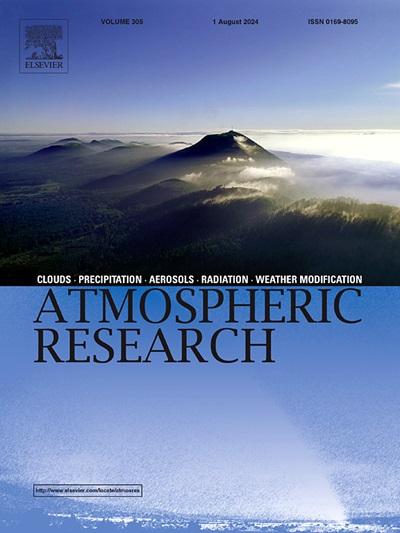Microphysical effects of biomass burning aerosols enhance rainfall in the El-Niño-driven dryness over Southeast Asia
IF 4.5
2区 地球科学
Q1 METEOROLOGY & ATMOSPHERIC SCIENCES
引用次数: 0
Abstract
During the month of September, biomass burning activities peak in the southern part of Southeast Asia or the Maritime Continent. The emission and longevity of aerosols in the atmosphere depend on the rainfall, which in turn is largely dependent on the phase of El Niño–Southern Oscillation over this region. The results of a set of cloud-resolving simulations by a meteorology-chemistry model reveal that the large amount of fire aerosol particles emitted in this area acted to enhance the rainfall in September 2009, an otherwise dry El-Niño month. This enhancement was found to stem from increased ice and snow mass, likely due to reduced fallout of cloud water mass earlier in the development stage. This finding is in agreement with our previous finding from another El Niño year of 2015, indicating the microphysical effects of those fire particles slightly mitigating the dry conditions over the area in these El Niño years. The magnitude of the rain enhancement was larger for September of 2015 when the stronger El Niño led to a drier condition than September of 2009. Especially over land where the aerosol effect was most pronounced, the percentage increase of rainfall in 2015 was twice as large as that in 2009. Given the comparable aerosol optical depths between the two years in our simulations, we attribute the difference in the aerosol effect in 2009 and 2015 to the mid- and upper-tropospheric dryness that may or may not leave room for the convective invigoration by aerosols.
求助全文
约1分钟内获得全文
求助全文
来源期刊

Atmospheric Research
地学-气象与大气科学
CiteScore
9.40
自引率
10.90%
发文量
460
审稿时长
47 days
期刊介绍:
The journal publishes scientific papers (research papers, review articles, letters and notes) dealing with the part of the atmosphere where meteorological events occur. Attention is given to all processes extending from the earth surface to the tropopause, but special emphasis continues to be devoted to the physics of clouds, mesoscale meteorology and air pollution, i.e. atmospheric aerosols; microphysical processes; cloud dynamics and thermodynamics; numerical simulation, climatology, climate change and weather modification.
 求助内容:
求助内容: 应助结果提醒方式:
应助结果提醒方式:


